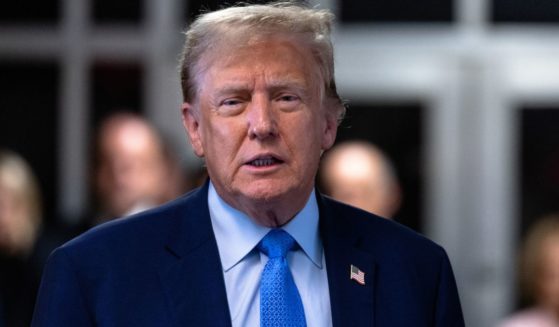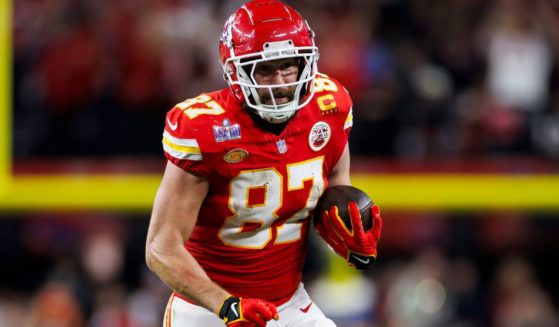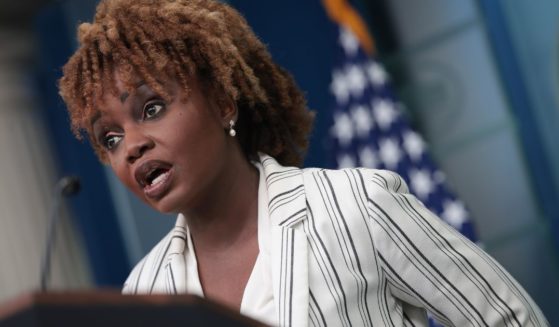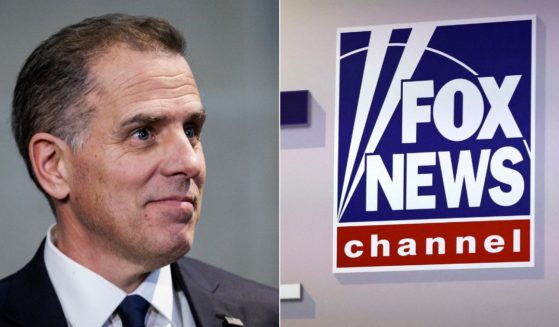Yankees Uniform Number Dilemma Could Force League-Wide Rule Change
On the 2016 campaign trail, former President Donald Trump famously said: “We’re gonna win so much, you may even get tired of winning. And you’ll say, ‘Please, please. It’s too much winning. We can’t take it anymore. Mr. President, it’s too much.'”
Well, let me tell you something, as a New York Yankees fan: No, Mr. Trump, you never get tired of winning.
Since the franchise was founded in 1903 as the New York Highlanders — the Yankees name-change came in 1913 — the Yanks have won 27 World Series titles and 40 American League titles.
And at times, it seems like they’ve accumulated as many nicknames as they have titles: “The Bronx Bombers,” “The Pinstripers,” “Evil Empire.” During the tumultuous Reggie Jackson/Billy Martin years in the 1970s, “The Bronx Zoo” also caught on.
The problem with winning so much over the course of 120 years is, well, you have a whole lot of winners on your team. They all have numbers — and like many franchises, the Yankees retire numbers of their most famous players.
According to The Athletic, that’s becoming an issue — and it could force a league-wide rule change in which managers and coaches no longer wear numbers like the players on the field, which has long been an outrageous affront to the players, anyway.
The Yankees have 22 retired numbers, the most of any team in Major League Baseball by far. (The second-most is 14, by the St. Louis Cardinals.)
Not only are the numbers 1-10 retired, but No. 8 is also retired twice, and both for catchers: once for Bill Dickey, a legend who played for the franchise between 1928 and 1943, and once for the epigrammatic Yogi Berra, who sat behind home plate between 1946 and 1963 for the Yanks. (Which legend is better? Instead of making a choice, I’ll defer to Berra’s wisdom: “When you come to a fork in the road, take it.”)
Now, granted, a Major League Baseball roster is only comprised of 26 men. However, add the Yankees’ on-field coaching staff, and there are 40 numbers out on the field at one time. But there are also the players who come to spring training vying for a roster spot who need numbers, as well as players who are acquired or come up from the minor leagues during the season.
“It’s going to get to a point where, if the coaches are going to keep their numbers, we may get to triple digits one day,” said Yankees director of clubhouse operations Lou Cucuzza for the piece, published Thursday.
In addition to the 22 numbers which are retired, there’s one number the club won’t allow players to use and another that got retired by every team.
We’ll deal with the latter first: As most baseball fans know, in 1997, the number 42 was retired for every team in honor of Jackie Robinson, the first player to break the color line in Major League Baseball. (The exception is April 15 — not just tax day, but also Jackie Robinson Day in MLB, commemorating the day he debuted for the Brooklyn Dodgers. Then, every player wears the number 42.)
However, for the Yankees, this is kind of academic, since they would have retired the number anyway: When Robinson’s number was retired in 1997, those who were wearing 42 at the time were allowed to continue wearing it until the end of their careers.
The last remaining player with the number was a Yankee — and arguably the greatest relief pitcher of all time, Mariano Rivera, who retired in 2013 and became the first (and to date, only) player unanimously elected to the Baseball Hall of Fame by the Baseball Writers Association of America. (As an example of their stinginess: Babe Ruth, whose iconic No. 3 is obviously also retired by the Yankees, only received 95 percent of the vote when he was inducted in 1936, according to Baseball Reference.)
The Yankees list Rivera’s No. 42 as being retired by the club, but it had already been retired. (As for that No. 8 controversy, it’s worth noting both Berra and Dickey were long gone from the game when their No. 8s was retired simultaneously in 1972.)
The other number that’s de facto banned by the club is No. 69, for reasons — sigh — you can probably guess at. This being a family publication, uh, we won’t go into them. Suffice it to say that relief pitcher Alan Mills briefly wore the number in 1990 after being assigned it in spring training and wearing it part of the season, but was forced to move to No. 28 in the middle of the season.
“I wanted to keep it,” Mills told The Athletic. “They didn’t want me to have it in New York.”
Yes, the mysteries of one of the most traditional franchises in all of professional sports — one which doesn’t even allow names on the backs of jerseys even in the year 2023 — not countenancing that. Moreover, there are other numbers that will likely be reserved for future retirement candidates. The number has been skipped over ever since.
Pitchers Masahiro Tanaka’s No. 19 and C.C. Sabathia’s No. 52 will likely be kept on hold for a few years. Sabathia, who was on the last Yankees’ championship team in 2009 and won the AL Cy Young Award and AL Championship Series MVP that year, is a better candidate than Tanaka, most of whose success came during his time playing in Japan.
Then, there’s the issue of lower numbers having more cachet in baseball.
“When a player or a coach asks Cucuzza for a number, it’s usually in the lower digits, and 15 of the Yankees’ 22 retired numbers are lower than 30,” The Athletic reported.
“Paul Lukas, the founder of Uni Watch, a website that covers sports uniforms and logos, said lower numbers have been popular for a long time in baseball because when numbers first started getting emblazoned on jerseys in the early 20th century, they correlated to a players’ spot in the batting order. Since many of the early uniforms featured lower digits, those were also the numbers of the players who were among the earliest Hall of Fame inductees. Babe Ruth wore No. 3. Mel Ott wore No. 4. Joe DiMaggio had No. 5. The highest number retired by the Yankees is Bernie Williams’ No. 51.”
And what about future retired numbers? You might as well put Aaron Judge’s No. 99 on the list right now — while he’s still young, Gleyber Torres could end up making a persuasive case for No. 25 to get removed from circulation.
Thus, the Yankees could put an end to coaches wearing numbers. In the other three major leagues, the coach either wears licensed, team-issued regalia like in the NFL, or suits and ties (NBA, NHL). The reason behind coaches wearing numbers is because, in the early days of baseball, many coaches were also players, too. It’s persisted because, unlike those other sports, coaches either are stationed on the playing field (like the first- and third-base coaches, who stand outside the foul line beside those bases) or enter the field to talk to pitchers or umps.
However, as The Athletic notes, “[Yankees] manager Aaron Boone and every single member of the team’s constantly expanding coaching staff proudly display their uniform tops and shiny blue numbers, as is tradition, before Game 1 against the Giants at Yankee Stadium on Thursday, but then likely not again for the rest of the regular season.
“Once the ceremonies of Opening Day are done, and the season has settled into its typical rhythms, Boone and the coaches will opt most days for the warmth and comfort of league-issued hoodies or pullovers, not unlike most staffs around the league.”
Yet, managers still have to be issued numbers, as per MLB rules.
And, as for the idea that any coach in the 21st century needs to be in a uniform: I’d like to present some photographic evidence against that, your honor:
Why don’t more coaches wear a jersey like George Karl did. pic.twitter.com/bDieKgbGyl
— Brandon B-Train (@BamaHater7) February 26, 2018
Remember that time George Karl wore a throwback jersey when he was coaching the Nuggets? pic.twitter.com/W0aV32yqCl
— Leigh Ellis (@LeighEllis) December 15, 2015
This is former NBA coach George Karl, who did once play professionally for five years with the San Antonio Spurs. He’s much better known as a coach — and here, in 2005, he decided to don a Denver Nuggets throwback jersey on the sidelines for one game.
He looks like a fat buffoon who never played a game in his life.
Now, granted, New York manager Aaron Boone played slightly more recently and is in somewhat better shape, but there’s no reason he should be wearing No. 27. And that’s just a relatively young, relatively fit head coach. Longtime Baltimore Orioles manager Earl Weaver wore a No. 4 jersey while he looked like a screaming grandpa telling umpires to get off his lawn, and stuffing legendary (and legendarily adipose) Los Angeles Dodgers manager Tommy Lasorda into his No. 2 uniform was likely an effort that required two tailors, three clubhouse workers and a plumber to pull off.
4 days until Opening Day.
Earl Weaver wore No. 4 as he advanced the game, screamed at umpires, and managed the Orioles for 17 seasons.pic.twitter.com/snHIL2Luia
— Locked On Orioles (@LockedOnOrioles) March 26, 2023
Tommy Lasorda has had it with the Philly Phanatic.
— The Pastime Co. (@thepastimeco) April 2, 2023
And as for the first- and third-base coaches being on the field during the game: So what? It’s not like they have a glove. They’re not going to turn a double-play if the third-baseman misses a grounder. Heck, bring baseball into the 21st century and give players earpieces, and they could be sitting in a box 80 rows above the field.
But you’ve heard it so many times before: Baseball is all about tradition. Most of the whining you’ve heard about messing with the game this season has to do with the pitch clock, which forces pitchers to throw a ball within 15 seconds if the bases are empty and 20 seconds if there are runners on. The average length of a game went from 2.46 hours in 2003 to 3.03 hours in 2022, according to Statista. Something needed to be done — but the purists shuddered as if MLB had suddenly started playing by Wiffle ball rules.
Furthermore, The Athletic noted it “spoke to about a dozen managers and coaches across the league about the issue. None said they would mind surrendering their number for good” — including Boone.
“The game is about the players,” Boone said. “I’d be fine losing mine.”
Baseball games don’t need to be three hours long, and flabby old men don’t need to be issued uniform numbers. If it takes the Yankees’ century-and-change of success to finally get MLB to realize the latter point, then no, it’s never too much winning. I’ll never get tired of it.
Truth and Accuracy
We are committed to truth and accuracy in all of our journalism. Read our editorial standards.












